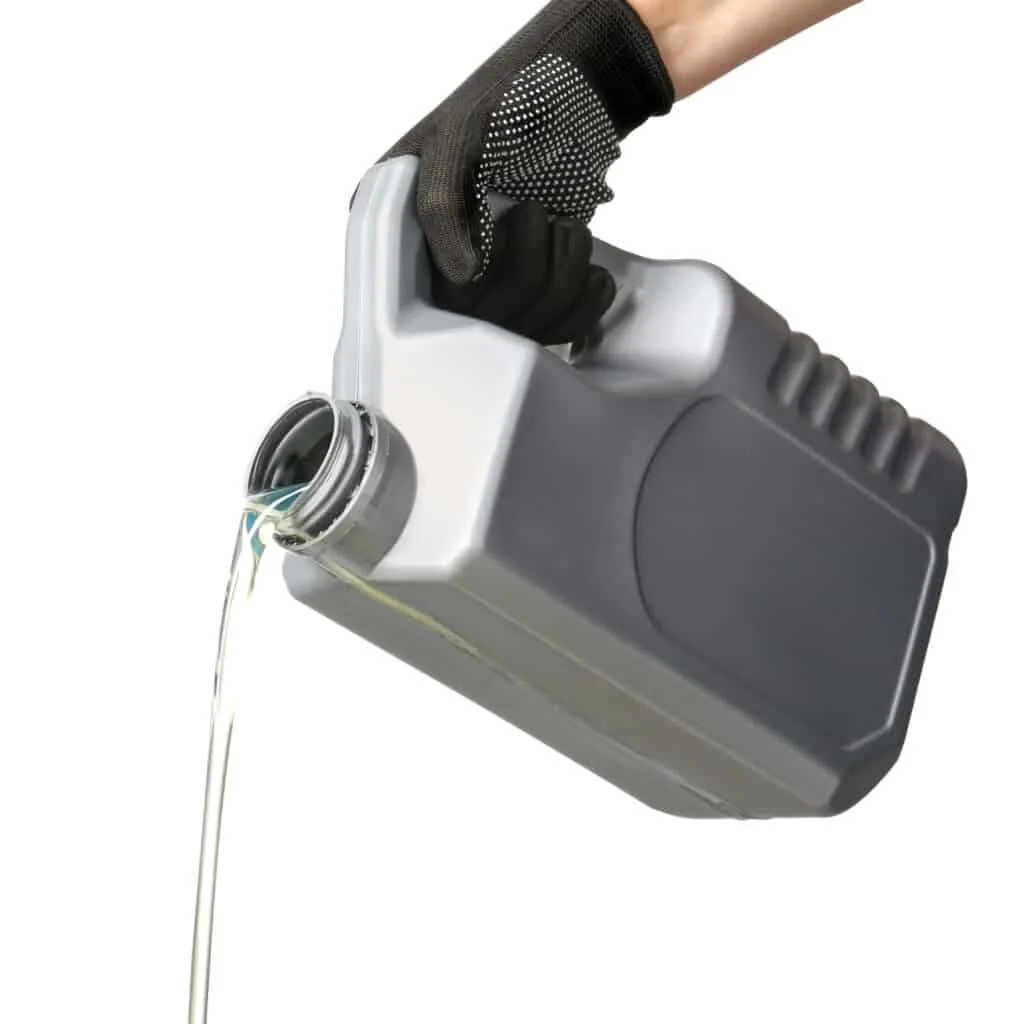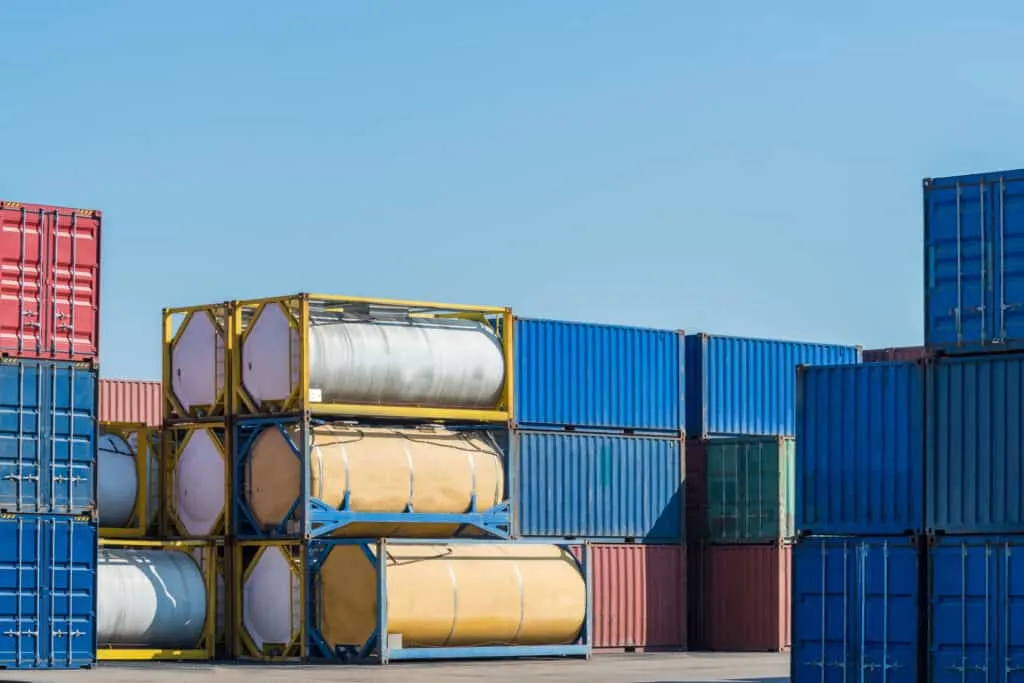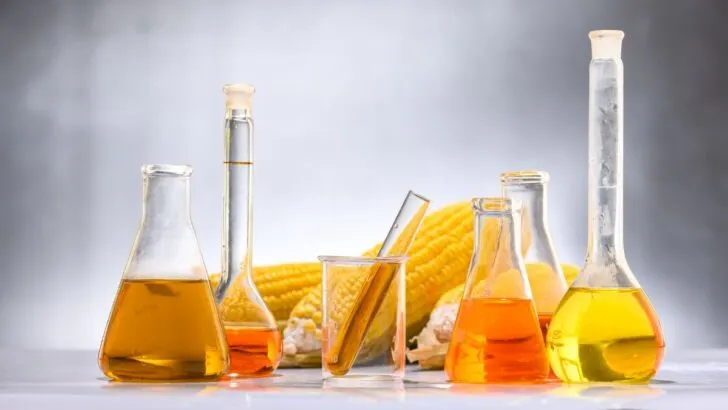It’s important that to be able to differentiate the color between good and bad gas. When a fuel tank is full of bad gasoline, it can cause all kinds of damage to your vehicle!
Natural gasoline has no color at all and is clear like water. However, each grade of gas is dyed with sulfur or other dyes to differentiate the fuel for various vehicles or octane levels. Dark brown or black gas is indicative of a problem.
When the fuel has been sitting in a gas tank for an extended period of time, then it is important to check its color. Gas should not be a dark brown color because that means it has been stagnant for too long and has become oxidized.
It’s important to know what you should do if you come across bad gasoline in your fuel tank.
Table of Contents
What Color Is Gasoline: Different Grades and Colors
Pure gasoline is a crystal-clear color, which has a basically identical appearance to water. This has made it hard for sellers, manufacturers, and consumers to differentiate between the different grades of fuel.
For this reason, manufacturers have changed the colors of gasoline to help differentiate the fuel types! The different grades of gasoline are often dyed with sulfur or other additives.
The main petroleum-based fuels that are used in vehicles are:
- Regular (87 Octane)
- Midgrade, also known as Plus (89-90 Octane)
- Premium, also known as Super Premium (91-94 Octane)

Regular gasoline usually has a green or bluish hint to it. This is sometimes confused with the bluish color of aviation or racecar fuel.
Midgrade or Plus gasoline usually has a yellow color.
Premium gas is often a pinkish color.
No matter what the gas color may be, it should still be transparent and light in color overall.
When initially pumping gas in a fuel tank, it’s not too crucial to see which color it is (and it’s difficult to check the color at a gas pump anyway). The dyes are mostly to help the manufacturers and sellers differentiate between the different gases.
If you haven’t driven your car for a while (about a month or longer), it’s important to check its color. If it is a dark brown color, this means that the gasoline has oxidized and is potentially dangerous for your vehicle.
In order to compare the colors of gasoline, you can pump some fresh gas and some old gas into two transparent vessels. The fresh gas will be light in color and will depend on the fuel type that you have chosen.
If the older gas is a much darker brown than the fresh gas, that means that the oxidized fuel should no longer be used.
Dark brown gas can cause vehicles to stall, slowly accelerate, delay gear shift, and can even cause the check engine light to illuminate.
Using oxidized fuel can create costly and irreversible damage to the vehicle, so it is important that you know between the fresh and expired colors of gasoline.
How to Remove Bad Gas
It is always wise to seek help and advice from a professional rather than taking this task into your own hands. However, if the situation does not allow this, there are instructions on how to remove bad fuel on your own.
If you see that you have oxidized gasoline, you will want to remove it from your fuel tank. If the fuel tank is full of expired gas, it may take a longer time to empty because it can take up to two minutes to siphon out one gallon of gas.
Be sure to set aside some time to pump out bad fuel.
Also, ensure that you are in a well-ventilated area before performing a fuel tank drainage due to the dangerous vapors of gasoline.
First and foremost, it is important to have a siphon hand pump available. It is hazardous to inhale or swallow gasoline, so be sure to utilize a siphon hand pump.
This is a small tube that will be used to pump the gas out of the fuel tank. It should be about 6 feet long and 3/8 inch to 1 inch thick (the thicker the hose, the longer the pump time will be).
Another item you will need is a fuel storage can in order to store and dispose of the oxidizing gas. Using the hand pump, you will feed the siphon hose into the fuel tank.
Once you have reached the fuel tank, you will feed the other hose into the fuel storage can and pump out the gas until the fuel tank is empty.
When all the bad gas has been siphoned out of the fuel tank, it is crucial to dispose of it in a government-approved site. Gas should never be thrown away in trash cans, drains, lakes, etc.
Be sure to contact your local waste department to ensure you’re using a proper disposal site.

Gasoline Shelf Life & Color
The shelf life of gas isn’t very long. It lasts anywhere between 3-6 months. Once reaching its expiration date, gas oxidizes and becomes highly unusable.
Unfortunately, the higher grade fuel types do not have a longer shelf life than the regular gasoline.
However, there are a few ways to extend the lifetime of gasoline. There are fuel stabilizers up for purchase that can slow the time that it takes for gas to oxidize.
The most popular brands of fuel stabilizers are STA-BIL, Seafoam, Lucas, and Marvel.
Fuel stabilizers and additives are best to use in new gas so they can offset the effects of oxidation, but it won’t be much help for gasoline that has already oxidized.
Using a fuel stabilizer can keep gasoline fresh for anywhere from 1 to 3 years.
If you do have old gas in your fuel tank, you also have the option to dilute it with fresh gasoline. The combustion ability of the car might not be up to par, but it allows you to utilize the old gasoline.
When doing this, it is important to contact a professional to see if you will need to add any fuel additives to the fuel tank.
Gasoline Color FAQs
What color is pure gasoline?
Pure gasoline, also known as straight gasoline or “pure gas,” refers to gasoline that does not contain any ethanol or other fuel additives. Ethanol is a renewable fuel additive that is commonly used in gasoline to increase its octane rating and reduce emissions.
However, some consumers prefer to use pure gasoline in their vehicles and equipment, as it is believed to provide better fuel efficiency and may be less harmful to certain types of engines.
Pure gasoline is typically more expensive than ethanol-blended gasoline, as it requires more refining and does not benefit from the same tax credits and incentives as ethanol-blended fuels. It can also be more difficult to find, as many gas stations only offer ethanol-blended fuels.
It’s worth noting that while pure gasoline may offer some benefits, it is not necessarily the best option for all vehicles and equipment. Some modern engines are designed to run on ethanol-blended fuels, and using pure gasoline may actually harm these engines.
It’s important to consult your owner’s manual or a trusted mechanic to determine the best type of gasoline for your specific vehicle or equipment.
Is premium gasoline a different color?
Premium gasoline is not typically a different color than regular gasoline. Both types of gasoline are typically a light brown or amber color.
The difference between regular and premium gasoline is primarily in their octane rating, which is a measure of the gasoline’s resistance to knocking or pinging in the engine.
Premium gasoline has a higher octane rating than regular gasoline, usually around 91 or 93 octane, compared to 87 octane for regular gasoline.
This higher octane rating allows premium gasoline to be used in higher-performance engines or engines with a higher compression ratio, as it can withstand higher temperatures and pressures without detonating prematurely.
While the color of gasoline is not a reliable indicator of its octane rating or quality, some gas stations may use color-coding or labeling to indicate the different types of gasoline they offer.
For example, premium gasoline may be labeled as “91” or “93” and may have a different color handle or nozzle than regular gasoline.
However, this can vary depending on the gas station, and it’s important to check the octane rating and other specifications listed on the pump before filling up.
Why is gasoline green?
Gasoline is not typically green in color. It is usually a light brown or amber color. However, gasoline pumps and storage tanks often have green handles, nozzles, or labels to indicate that they contain gasoline.
This color-coding system is used to help prevent people from accidentally putting the wrong type of fuel into their vehicles or equipment.
The reason for using the color green to designate gasoline is not clear, but it may be because green is often associated with go or proceed, which could be helpful for drivers at a gas station.
Additionally, green is a color commonly used to indicate safety or caution, which could be important when handling a flammable substance like gasoline.
It is important to note that gasoline is a toxic and potentially dangerous substance and should be handled with care.
It should only be used in properly designed and maintained equipment and never be ingested or used in an unventilated area. Gasoline spills should be cleaned up promptly and according to appropriate safety guidelines.
What does old gasoline look like?
Old gasoline can vary in appearance depending on how it has degraded over time. Generally speaking, old gasoline will become darker in color and may appear cloudy or hazy.
It may also develop a thicker consistency, similar to syrup or honey. In extreme cases, the gasoline may even appear to have separated into layers, with a clear or yellowish liquid on top and a darker, sludgy substance on the bottom.
Another way to identify old gasoline is by its smell!
Gasoline that has gone bad will often have a sour or pungent odor, which can be very different from the normal gasoline smell.
It is important to note that using old or degraded gasoline can cause serious damage to engines and equipment. As gasoline ages, its chemical composition can change, leading to decreased fuel efficiency, engine misfires, and other problems.
It is generally recommended to use gasoline within 30 days of purchase to ensure its quality and to properly store gasoline in a cool, dry, and well-ventilated area to prevent degradation.
If you suspect that your gasoline may be old or degraded, it is best to dispose of it properly and purchase fresh gasoline before using it in your equipment.
What is the color of petrol fuel?
Petrol, which is also known as gasoline, typically has a light brown or amber color. It is a refined petroleum product that is made up of a mixture of hydrocarbons and other additives that help improve its performance and efficiency.
However, it’s important to note that petrol may sometimes appear to have a different color due to the addition of dyes or other additives. For example, in some countries, petrol may have a blue or green tint to indicate that it has a higher ethanol content, which is a renewable fuel additive.
In other cases, petrol may be dyed red or pink to indicate that it is for off-road or agricultural use only, as it may have a lower tax rate and cannot legally be used in on-road vehicles.
It’s worth noting that the color of petrol is not an indicator of its quality or performance. Rather, it is the specific chemical composition of the petrol that determines its properties, such as its octane rating, volatility, and energy content.


Bob
Sunday 11th of February 2024
There may be an error. I have a diesel truck and a diesel tractor. When I buy diesel for the tractor, or extended range for the truck, I use the green handled pump and dispense it into the yellow container. Typically the the gasoline for my small engines is pumped from the black nozzle into the red container.
The article had the gasoline using the green nozzle.